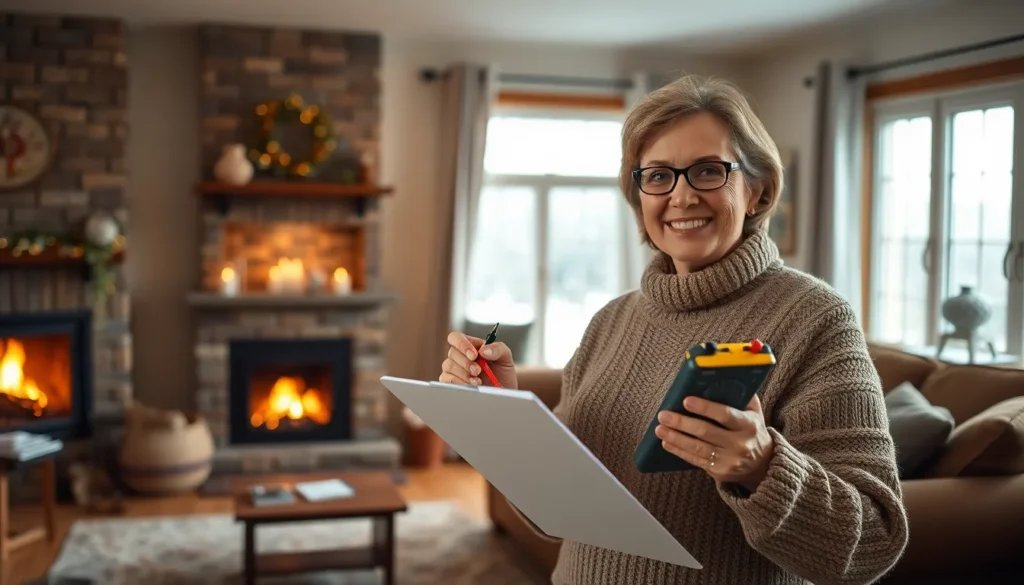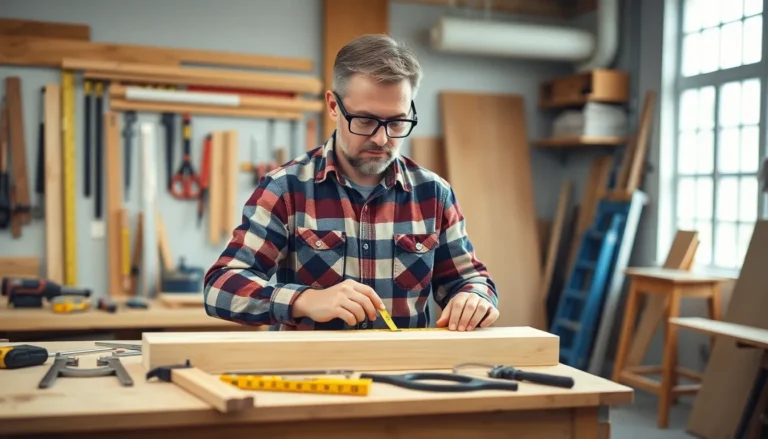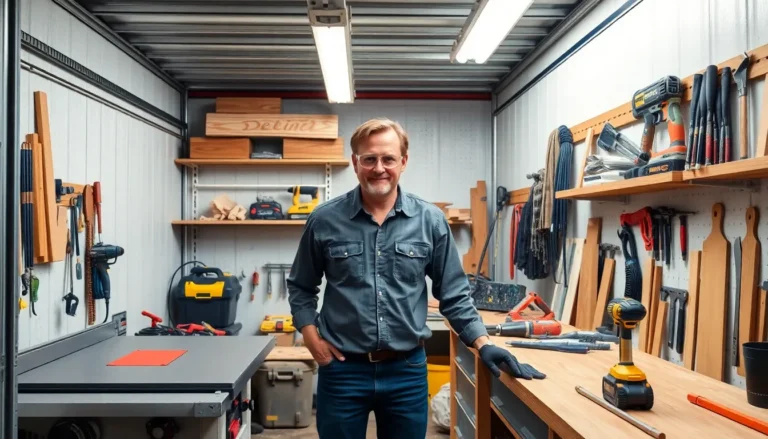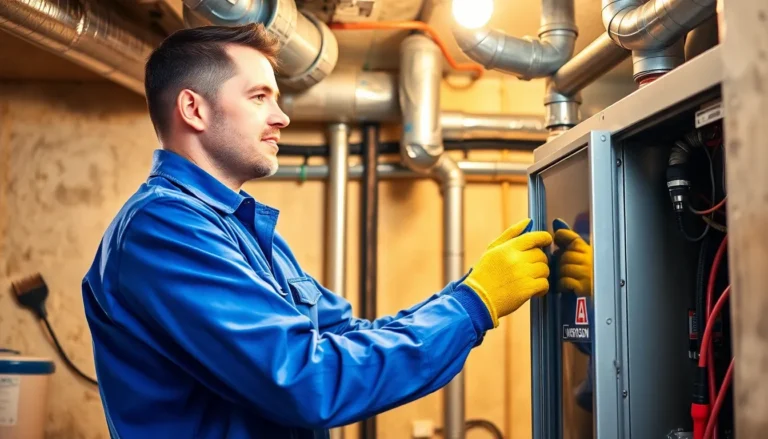Table of Contents
ToggleWhen it comes to home sweet home, few things can spark joy like knowing your electrical, plumbing, and heating systems are in top shape. Imagine a cozy winter evening with the heating cranked up, lights shining bright, and no surprise leaks ruining your day. Sounds dreamy, right? But let’s face it—navigating these home systems can feel like trying to solve a Rubik’s Cube blindfolded.
From flickering lights that resemble a disco party to plumbing issues that could rival a scene from a horror movie, it’s essential to keep these systems running smoothly. With a little know-how and a sprinkle of humor, tackling home electrical, plumbing, and heating challenges can be a breeze. Buckle up as we dive into the essentials that’ll keep your home safe, warm, and leak-free—because who needs extra drama in their life?
Overview of My Home Electrical Plumbing and Heating
Home electrical systems deliver power to essential appliances and lighting. Proper maintenance ensures efficiency and safety, allowing for uninterrupted daily activities. Regular checks on fixtures and outlets can prevent issues like shocks or fires.
Water supply relies heavily on effective plumbing systems. Pipes, fixtures, and drains work together to deliver clean water and remove waste. Conducting routine inspections identifies leaks early, helping avoid costly repairs and water damage.
Heating systems play a vital role in maintaining a comfortable indoor climate during colder months. These systems require regular servicing to enhance performance and prolong lifespan. Homeowners benefit from scheduling annual maintenance checks to address any wear and tear.
Efficiency is crucial in all three areas: electrical, plumbing, and heating. Upgrading outdated systems reduces energy consumption significantly. Energy-efficient appliances not only save money but also minimize the environmental impact.
Understanding how these systems operate empowers homeowners to troubleshoot minor issues. Recognizing signs of electrical problems, such as flickering lights, facilitates early intervention. Plumbing issues, like slow drains, usually signal the need for immediate attention.
Homeowners can create a checklist for maintaining electrical, plumbing, and heating systems. This strategy promotes organized upkeep, ensuring nothing falls through the cracks. Emphasizing safety and efficiency fosters a comfortable living environment.
By maintaining all three systems, homeowners can enjoy peace of mind. Efficient operation contributes to a cozy atmosphere, especially during winter. Prioritizing these home systems leads to improved quality of life overall.
Importance of Home Electrical Systems
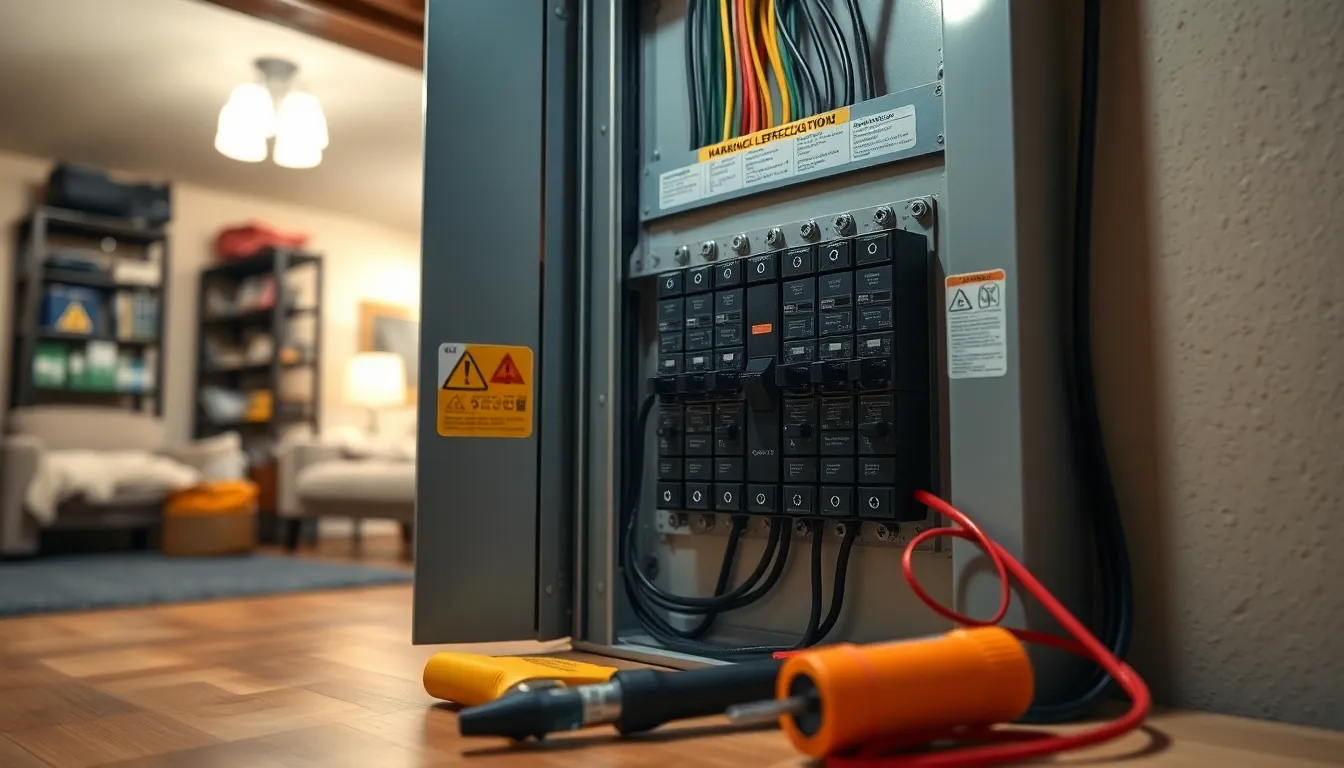
Home electrical systems play a critical role in daily living. These systems provide power for essential functions, enhancing safety and comfort.
Types of Electrical Systems
Residential electrical systems include several types. This encompasses the wiring, circuit breakers, and outlets that deliver electricity throughout the home. Lighting systems ensure adequate visibility in various spaces. HVAC systems provide heating and cooling, maintaining indoor climate control. Security systems protect against intruders, utilizing power for alarms and cameras. Home entertainment systems also rely on electrical connectivity to function properly. Each type of system requires regular maintenance to ensure optimal performance and safety.
Common Issues and Solutions
Common electrical issues can disrupt daily life. Overloaded circuits often lead to tripped breakers, indicating the need for load management. Flickering lights may signal faulty wiring, necessitating prompt inspection. Ground faults can pose serious hazards, requiring immediate attention from professionals. Homeowners often find that dead outlets stem from loose connections, which can be easily remedied. Timely identification and resolution of these problems prevent larger safety risks and costly repairs, reinforcing the overall importance of maintaining electrical systems.
Plumbing System Evaluation
Evaluating the plumbing system ensures efficiency and prevents costly repairs. Inspections and maintenance play crucial roles in maintaining optimal function.
Inspection and Maintenance Tips
Regular inspections help identify leaks and blockages quickly. Homeowners should check water pressure and monitor for damp spots on walls and ceilings. Schedule routine maintenance every year to assess pipes and fixtures. Hiring a licensed plumber for inspections is also beneficial. They pinpoint issues that might not be easily noticeable. Keeping drains clear prevents backups and ensures smooth operation.
Upgrading Plumbing Fixtures
Updating plumbing fixtures enhances both efficiency and aesthetics. Consider installing low-flow faucets and showerheads to conserve water. These fixtures reduce consumption without sacrificing performance. Swapping out old toilets for high-efficiency models can save up to 13,000 gallons of water annually. Selecting durable materials like brass or stainless steel improves longevity. Upgraded fixtures also increase home value and appeal.
Heating Solutions for Homes
Effective heating solutions significantly enhance comfort during colder months. Homeowners must consider the type of heating system that best suits their needs and home layout.
Types of Heating Systems
Central heating systems distribute warmth throughout the entire home via ducts or pipes. Options include furnace systems, which use natural gas or electricity to generate heat, and boiler systems, which heat water for radiators or radiant heating. Space heaters offer localized heating and can be a cost-effective solution for individual rooms. Heat pumps, using electricity to transfer heat instead of generating it, provide efficient heating in mild climates. Radiant floor heating systems deliver warmth from the ground up, offering consistent heat without the drafty feel of some other systems. Selecting the right heating system depends on energy needs, installation costs, and overall efficiency.
Energy Efficiency Considerations
Energy efficiency plays a vital role in reducing heating costs. Choosing Energy Star-rated appliances and systems can lead to substantial savings over time. Insulating the home properly prevents heat loss, ensuring that the heating system doesn’t work harder than necessary. Programmable thermostats allow homeowners to control temperature settings, reducing energy use when the home is unoccupied. Regular maintenance of heating systems, such as cleaning filters and checking for leaks, maximizes efficiency and prolongs lifespan. Investing in energy-efficient heating solutions not only contributes to environmental sustainability but also improves comfort levels within the home.
Safety Measures and Compliance
Prioritizing safety in home electrical, plumbing, and heating systems is essential for peace of mind. Homeowners must comply with local building codes and regulations regarding installation and maintenance. Regular inspections by licensed professionals can identify potential hazards before they escalate.
Ensuring proper grounding and bonding for electrical systems protects against electrical shock. Installing smoke and carbon monoxide detectors throughout the home enhances overall safety. Using GFCI (Ground Fault Circuit Interrupter) outlets in areas prone to moisture, such as bathrooms and kitchens, significantly reduces shock risks.
Plumbing also requires adherence to safety measures. Routine checks help detect leaks, which can lead to mold growth and structural damage. Maintaining proper water pressure within recommended levels prevents wear on pipes and fixtures, extending their lifespan. Employing backflow preventers safeguards drinking water from contamination.
Heating systems require specific compliance with safety standards. Servicing furnaces and boilers annually can catch malfunctions early, preventing hazards like carbon monoxide leaks. Proper ventilation ensures exhaust gases are safely expelled outside, reducing the risk of dangerous indoor air quality.
Incorporating energy-efficient components aligns with safety efforts and promotes sustainability. Choosing appliances with Energy Star ratings reduces energy consumption, while also minimizing risks associated with outdated systems. Homeowners should keep up with technology advancements, as new systems often provide enhanced safety features.
Establishing a maintenance checklist promotes regular inspections and timely repairs. Tracking issues like faulty wiring or outdated plumbing elements helps avoid larger problems. Homeowners contribute to a safe living environment by staying informed and proactive in addressing all aspects of their home systems.
Maintaining home electrical, plumbing, and heating systems is crucial for safety and comfort. Homeowners who prioritize regular inspections and maintenance can significantly enhance their living environment. By understanding how these systems operate and recognizing early signs of trouble, they can avoid costly repairs and ensure efficiency.
Incorporating safety measures and adhering to local regulations not only protects the home but also contributes to a sustainable lifestyle. With a proactive approach and a well-organized maintenance checklist, homeowners can enjoy peace of mind and a cozy atmosphere year-round. Embracing this responsibility leads to a more comfortable and secure home for everyone.

